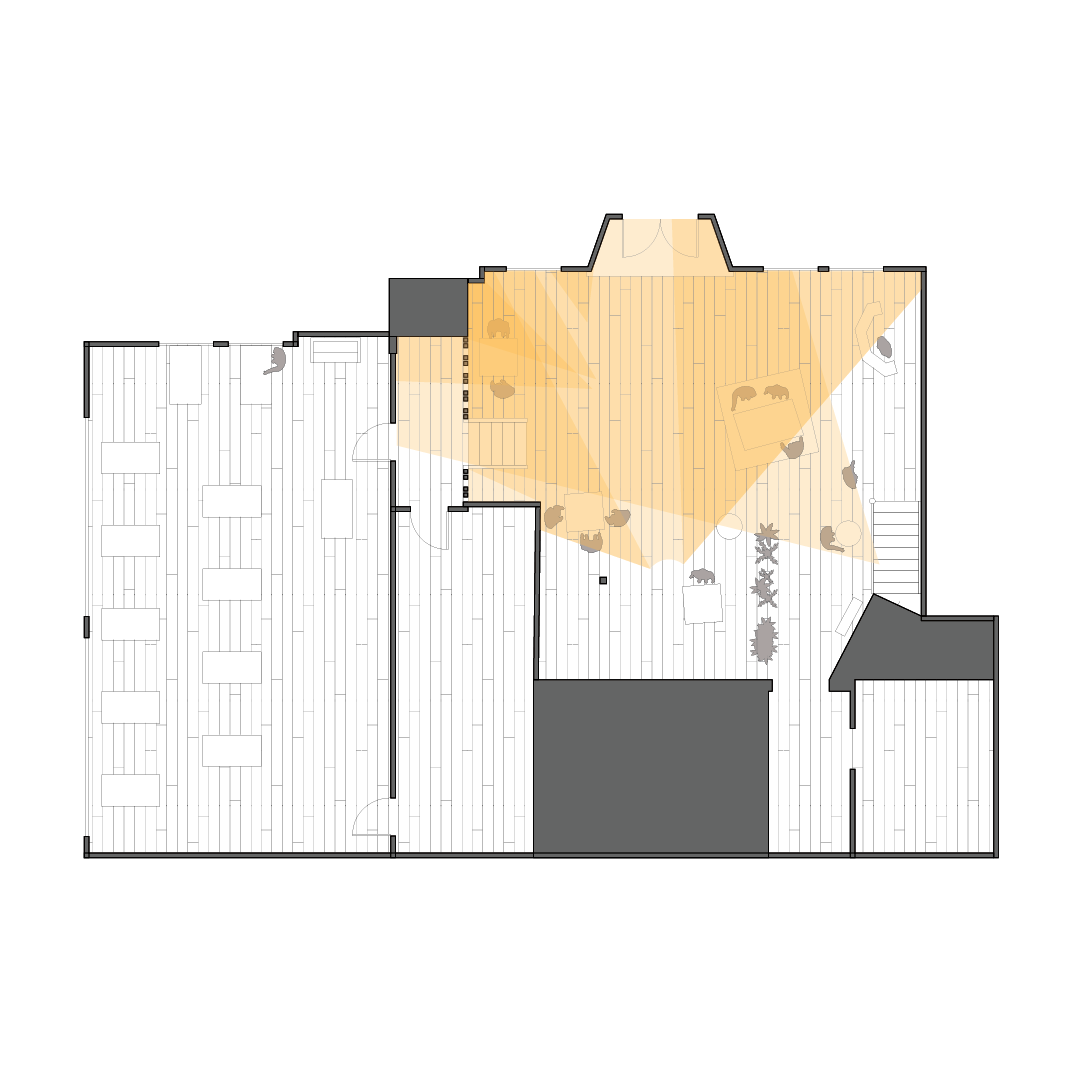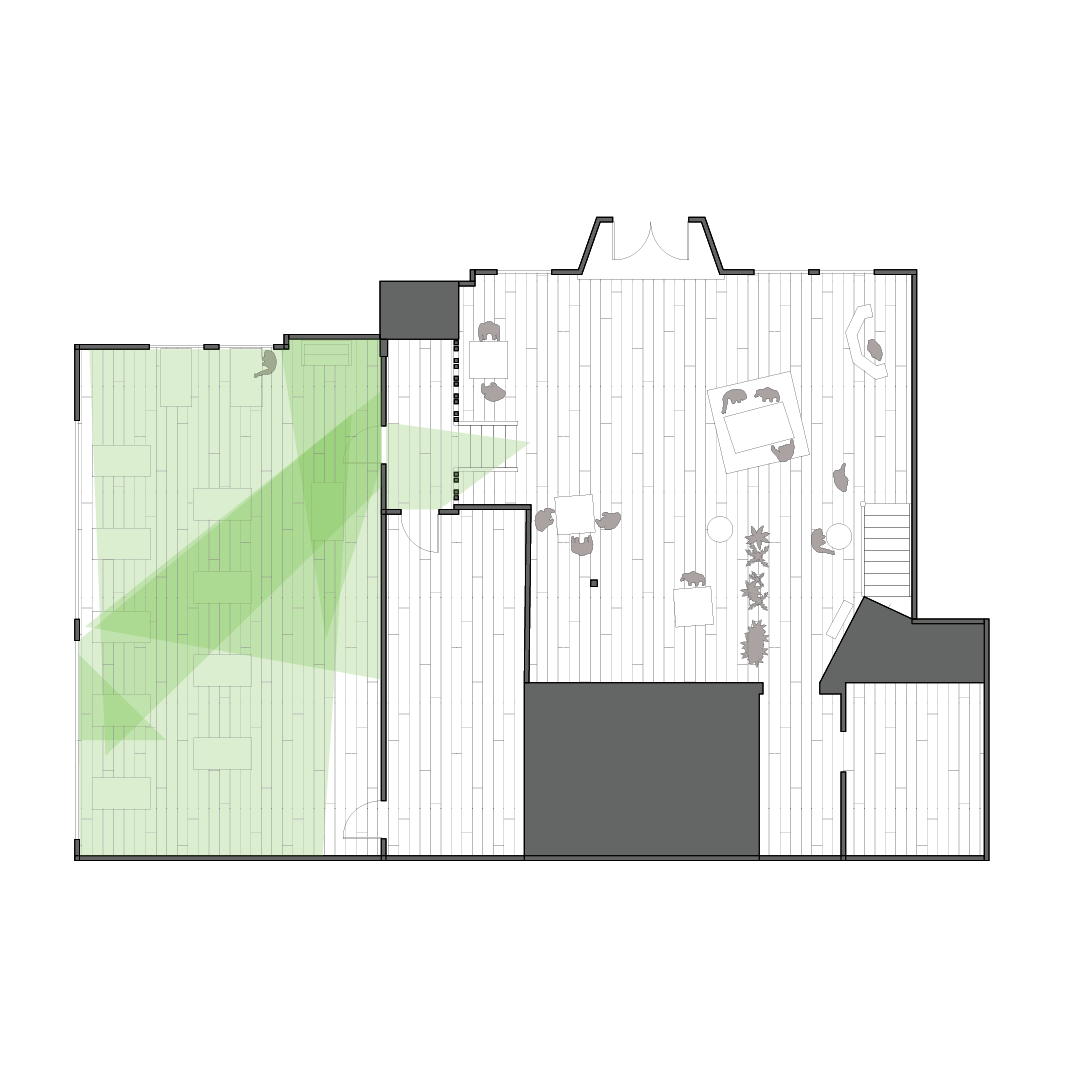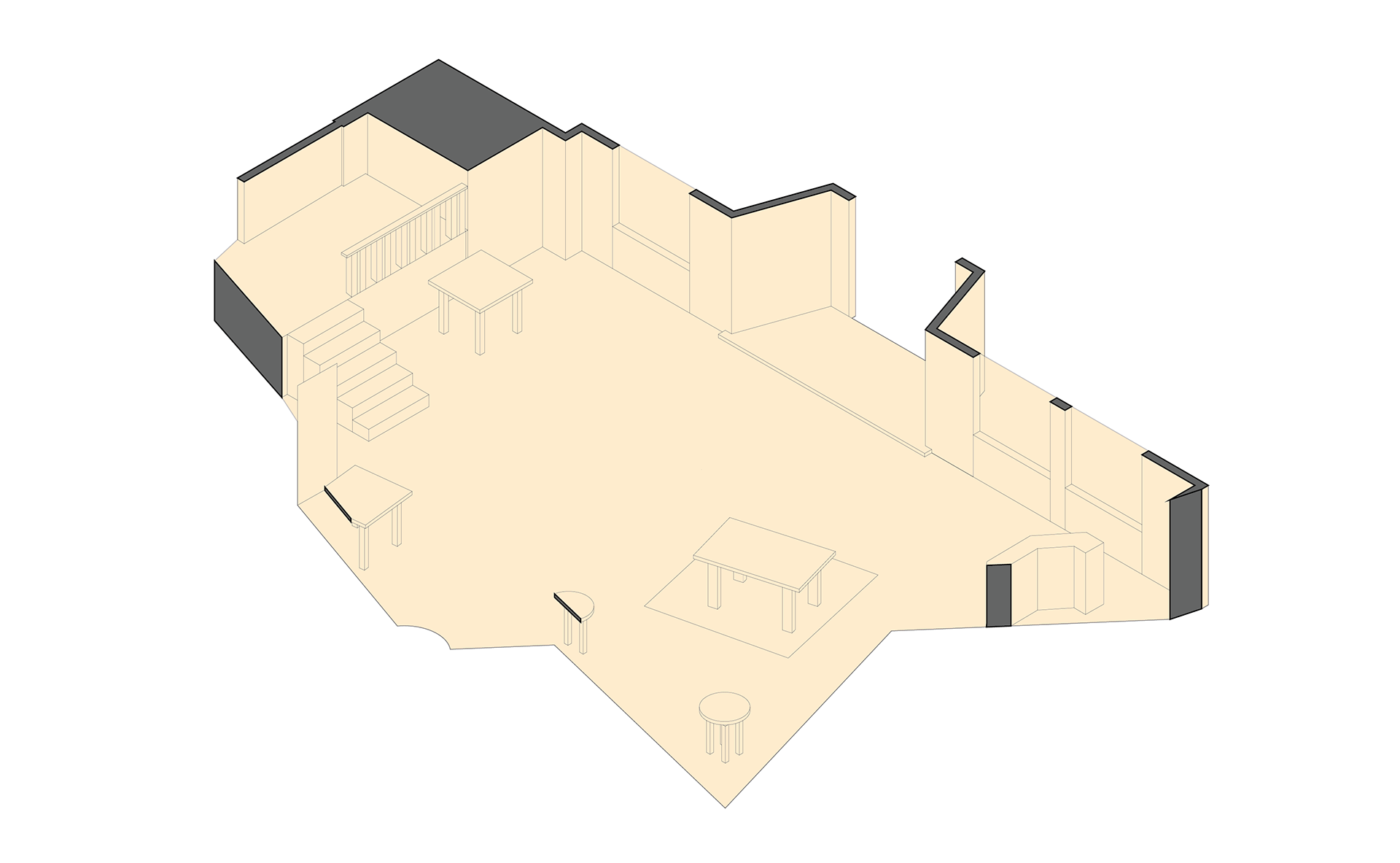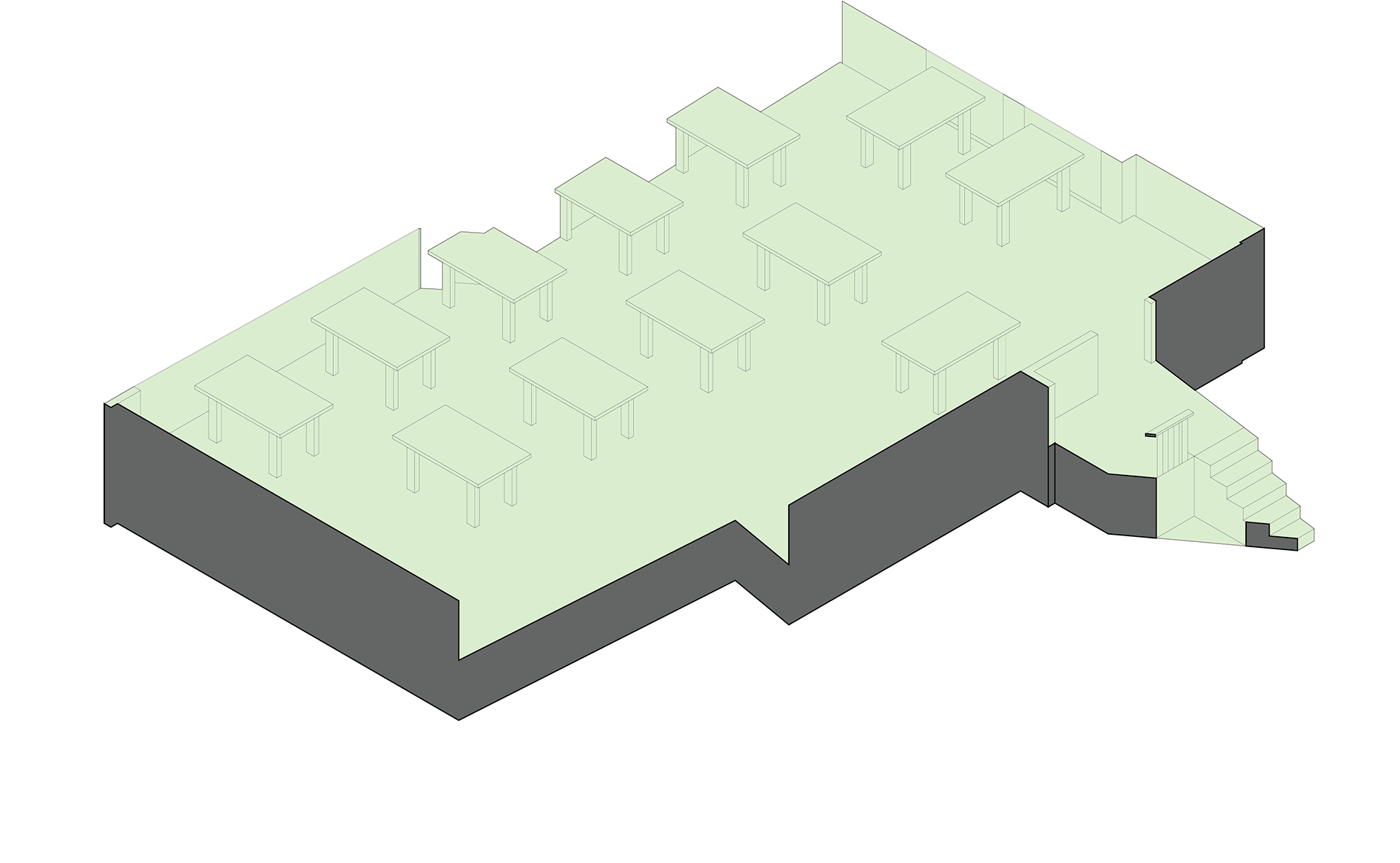Musings on Man as the Armature for Virtual Architecture in the work of Jacques Tati
In his 1935 essay The Work of Art in the Age of Mechanical Reproduction, Walter Benjamin posits that architecture and film are mediums that are both received in a mode of distraction by their audiences and thus exist within, and unravel through, both space and time. Through an examination of Jacques Tati’s Seaside Hotel in Les Vacances de M. Hulot, Office Building in Playtime and the differences between them, I explore how architecture is received through its sister medium of film, and in doing so, reveal the rhizomatic nature of the relationships between film, architecture, and the body of both the filmed and the observer.
In Les Vacances de M. Hulot one can take for example, the small seaside hotel that Hulot visits. Over the course of multiple scenes and shots, by following different characters’ movements, the architecture of the hotel is slowly revealed. Section by section as the film progresses the entire building is pieced together. Here, the process of a camera following a body becomes allopoietic. In the film, the characters are unhindered, the materialisation of the architecture is contingent upon the will of the character. This leads to an authoritarian power over the audience and how they are permitted to explore and perceive the architecture. The human takes precedence over the camera, which means perception of the film takes precedence over the perception of the architecture.






It is because the camera follows the movement of the character, that the architecture is passively unrolled in the background.
The body becomes a medium through which the camera can relay architecture to the audience.
Conversely, in Playtime the characters and their vectors of movement are dictated by the architecture. Architecture was the star and the people were just extras, and this is clear from Tati’s production choices of hiring everyday people as opposed to stars and redirecting those hiring funds to the fabrication of sets.[i] When juxtaposed with the fact that the hotel of Les Vacances was a preexisting space not commissioned for the film, it becomes apparent that the role of architecture in Playtime was specifically intended to be privileged over that of the filmed bodies. This is made tangible in the formal arrangement of the film itself. The field of vision of the camera creates virtual ‘pyramids of space’, and how the characters traverse through these pyramids of space further elucidates the hierarchical nature of the relationship between the camera, the body, and the architecture.